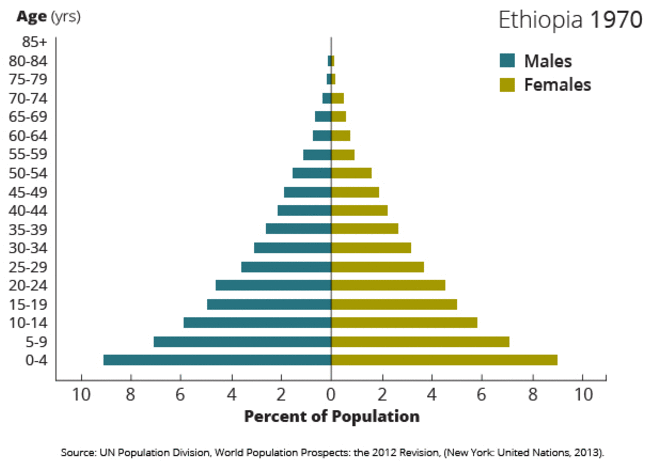-
Two New Sites Help Visualize Demographic Concepts and Their Effect on Development
June 4, 2015 By Linnea BennettA pair of recently launched data sources offers visualizations to help people understand two hot-button issues in demography: the demographic dividend and changing fertility rates.
DemographicDividend.org, a new website produced by the Population Reference Bureau and Bill and Melinda Gates Institute for Population and Reproductive Health, is tracking country-level progress on achieving a boost in economic productivity tied to demographic change. The demographic dividend, as the phenomenon is called, can happen when a population experiences a decrease in fertility rates so that the number of people in the labor force rises in relation to the number of “dependents” – children and retired people. As long as countries provide education and opportunity to these young working populations, an opportunity for rapid economic growth can arise.
The website gives users a place to explore a compilation of recent studies and news on the demographic dividend, as well as interactive graphs that outline global population trends. One section of the site provides profiles of nine African countries that have the potential to achieve the dividend, including predictions and guidelines for each country to get there. This includes the Democratic Republic of Congo which has one of the highest fertility rates in the world. Among its recommendations the site says substantial investments in reproductive health and girls’ education are needed to reduce fertility rates to a point where the dividend becomes possible. Because the potential for a dividend relies on the ratio of working age people to dependents, including young people, growth must decline before it can happen. Uganda also has a high fertility rate, for example, but recent political commitment to family planning increases its chances.
DemographicDividend.org also includes a publication search tool that helps users find research and case studies in English, French, or Bahasa, and there is a list of upcoming related events as well as other updates and developments from the field.
The Education Effect
The Wittgenstein Center for Demography and Global Human Capital released a new version of their tool for displaying critical demographic data. Initially launched alongside their report on women and girls’ education and population trends last year, the updated tool is more user-friendly and includes extended data, which can now be compared across countries, regions, scenarios, and time.
Better education in Nigeria could mean a difference of 72 million people by mid centuryThe new maps and database depict the average age, sex, and level of education in 196 countries, with projections of how those numbers can change between now and 2060 based on a variety of scenarios. It also color codes countries by the average number of years of schooling a woman receives.
One of the tool’s interesting examples is Nigeria, the most populous country in Africa with nearly 180 million people. Based on the map’s projections, its population could climb to 474 million people by 2060 if there are no efforts to expand education. But if Nigeria experiences a rapid increase in schooling across all levels of education – much like South Korea did in the 20th century – that number could drop by 72 million people. This follows current education and fertility trends, as Nigerian mothers with post-secondary education have an average of three children over their lifetimes, while mothers with no post-secondary education have almost seven.
The Wittgenstein Center proposes a stronger relationship between education and fertility rates than many other population projections, including the United Nations’, resulting in lower trajectories for much of sub-Saharan Africa. This has important implications for the demographic dividend, food security, and many other concerns.
Sources: DemographicDividend.org, Wittgenstein Center for Demography and Human Capital.
Image Credit: DemographicDividend.org.
Topics: Africa, demography, development, DRC, education, Ethiopia, Eye On, family planning, featured, gender, Korea, Nigeria, population, Uganda, youth
 A Publication of the Stimson Center.
A Publication of the Stimson Center.




